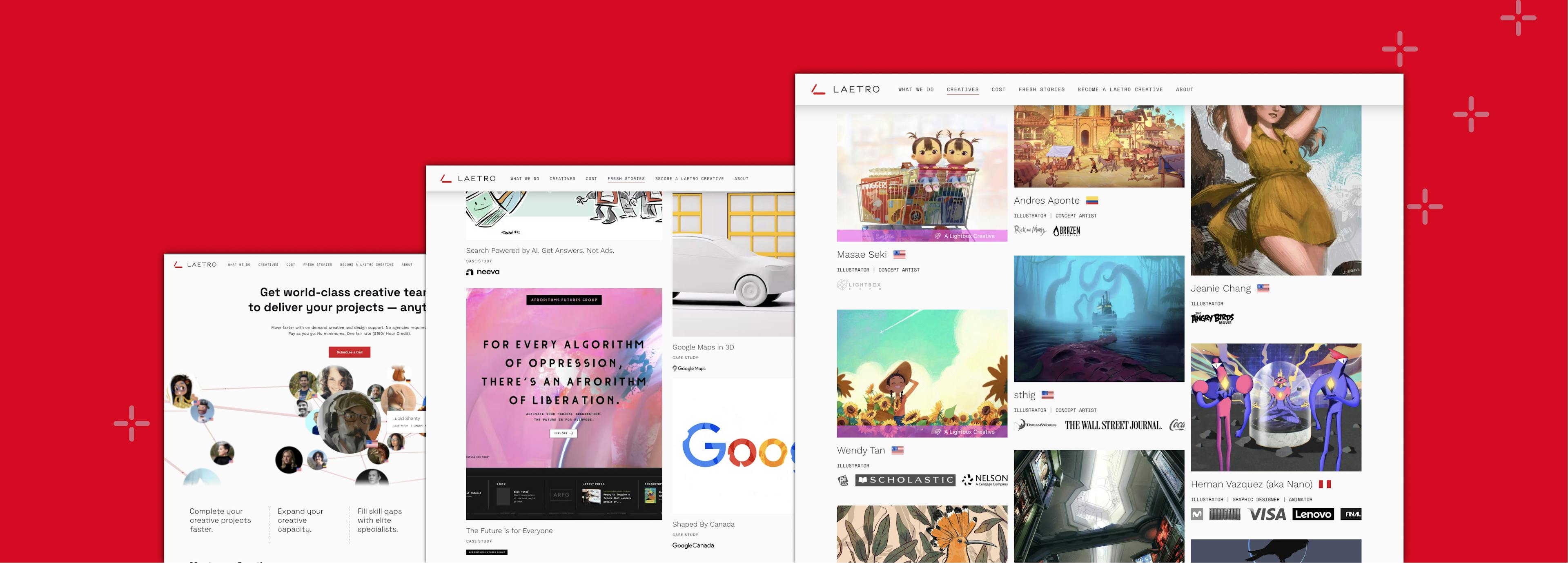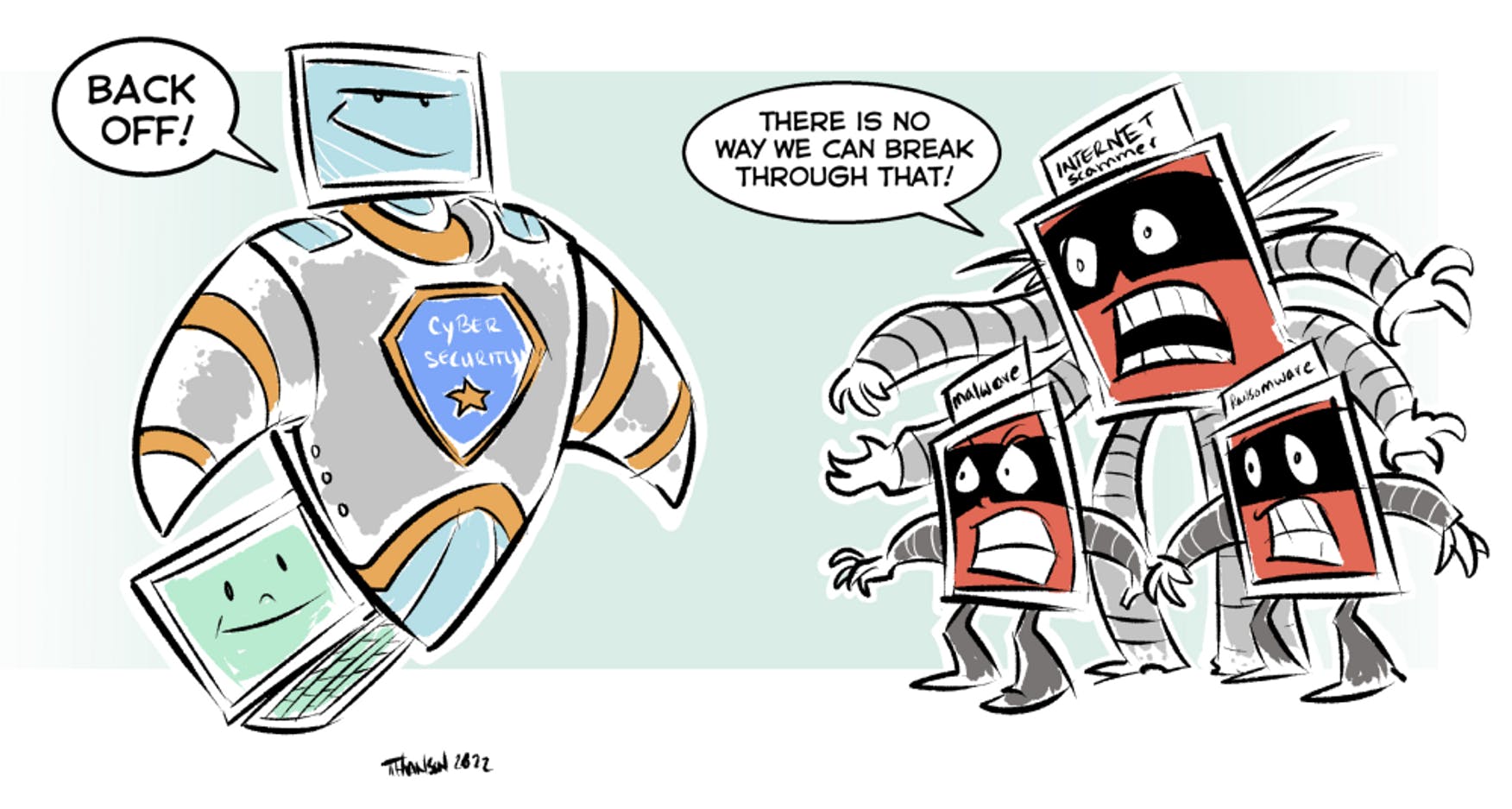“Getting creative” means different things to different people. To tap into their imagination, a studio animator might reach for their pencil, a graphic designer might open Illustrator, a UX pro could imagine the layout of an app in Figma, and a marketer may start thinking about how to tweak their product messaging.
On the surface, animators, product marketing managers, and ad agency-trained designers can look like they’re from different worlds. In some ways, they are – but just like every person with a creative soul, they’re bonded by a common drive to experiment, invent, play, and bring new ideas to the world. They’re often just operating in different spheres, but they’re asking the same main question core to the creative experience: What if?
When we created Laetro, Dave, Matt, and I absolutely came in from different spheres. My experience was in leading marketing for big tech brands. Dave’s was in animating major feature films. Matt’s was in building technically complex mobile and web products. Our meeting, like the creative process, involved a serendipity - we were in the right place at the right time. As we got to know each other, we naturally got into a flow of bouncing ideas around. And one (of the hundreds) that really got us excited was a big “what if?”.
What if we could build a place where creatives of all backgrounds could have a home under one digital roof. Where brands could access them without the issues that plague agency models, like bloated costs and slow processes. What if we could make it way easier to get to world-class creative work, for both creatives and brands?
This is the story of what happened when we all tried to answer that “what if”, of Laetro’s launch, and how we’re well on our way to making our idea into a real, way new way for everyone to get creative.
Broken record
When I worked for Google My roles involved customer acquisition for Google Ads and Google Fiber, and was also tasked with making sure new customers stayed happy. My team was made up of top-tier marketers, strategists, and creatives with in-house experience at other well-known companies. We accomplished a lot, including the creation of Google Partners, which is Google’s all-time highest-grossing marketing program. But the journey wasn’t without its challenges.
Given the scale of our team’s objectives and Google’s ambitious growth goals, we hired a number of well-qualified agencies to help us build our campaigns and experiences. Though I was impressed by a lot of their work, the same limitations kept coming up.
First, it was hard to be nimble and fast. For instance, while the agencies usually had the ability to do what we asked of them, it would take much longer than we would have liked – often weeks instead of days – and we’d get bogged down by the need to fill out a formal brief even for quick, basic tasks. This, in turn, created an issue with scalability: We’d be forced to prioritize one project over another when we would have preferred to work on everything at once, in the interest of speed.
Second, our creativity was limited by our set agency team. This constrained our options, but it also slowed us down. There were many one-off projects that required a niche skill set or a specific design or illustration style, but since we were limited to our go-to agency’s immediate staff. If we didn’t have the capability in-house, we’d need to bring in an entirely new vendor for just one engagement.
Third, it was often hard to make our budgets work hard. Though Google had healthy budgets, the high overhead costs of many agencies were opaque and not sustainable. If we couldn’t afford all the services we needed, or simply didn’t have enough needs to meet the minimum spend, I’d find that we had to sacrifice one idea for another due to financial constraints.
These types of obstacles were echoed not only by my experiences working for other companies, including Indeed and Gusto, but by many marketers who need nimble, reliable agency partners to help them reach their goals. It was a broken record I kept on hearing time and again.
Matt’s experience building end to end creative pipelines at scale also mirrored mine. He had seen how technology could help speed up processes, but was limited with his choices when it came to engaging external partners. When he needed a UX or product designer fast, or wanted to experiment, none of the partners were set up to work the way he wanted. He had to sacrifice speed for quality, and managing costs was a consistent challenge.
Dave, on the other hand, came from the entertainment sphere, and was an animation artist for huge titles such as Disney’s The Lion King, Aladdin, and Beauty and the Beast, among many other projects. While he worked to bring these amazing stories to millions of people, Dave and his creative colleagues also realized that their skills were transferable to other areas. In other words, they understood intuitively that creating an animated storyboard for a children’s adventure fantasy wasn’t too far removed from working with a healthcare brand to outline the journey of one of their patients.
They wanted to expand their portfolios and work for new types of brands, but didn’t know how to bridge the gap between their skills and the right opportunities – and they needed a flexible solution that would fit into their busy schedules.
It all comes together
These creatives had the skills to do amazing work for the world’s best brands, but companies themselves didn’t know how to find or evaluate them, and they lacked the structure to facilitate the most effective collaboration.
That’s where we saw the opportunity to build a platform that offered a hub for creatives and brands alike: an endlessly scalable model where companies could find the exact skill sets they needed, have the talent managed by a producer, and quickly get immediate access to the solutions for a fair price that allows them to stay on-budget while helping creative people from all backgrounds flourish.
We contacted friends and family, bootstrapped our way to an initial proof of concept, worked with some trusted, patient, and amazing first customers, and the answer to our what if got clearer and clearer. We could deliver top quality creative at speed for prices that made sense for those customers. We were able to connect creatives with work that were excellent matches to their skills. And we could use technology to tie it all together, continuing to iterate and improve with every project delivered.
We named it Laetro.
As we’re all using pixels to tell stories in this day and age, we derived the name from the concept “Maestros of Light.”

Technology and transparency powers our vision
Using technology in a smart way is what helps Laetro deliver on this new model. Since we understand that speed is one of the most important factors that brands and creatives look for, we built our platform with that in mind.
For clients, our process starts by connecting with you in Slack. There, you'll be linked up with one of our talented producers, who you can chat with and share all the essential information about a project. This includes the brief, style and brand guides, timelines, and any other team members who should be involved.
Once we have a clear understanding of your vision, we work closely with you to transform your ideas into tangible creations. Together, we'll establish a timeline for deliveries and revisions, determine the required hours and subsequent pricing. And pricing is transparent - one set price for each credit hour.
Throughout the process, constant communication and iteration are at the core of our approach. You’re actually connected to creatives in the same channel. No games of telephone, no Account Managers as gatekeepers, no multiple junior, senior, super senior levels. By maintaining an open, transparent line of dialogue, we ensure a smoother workflow and faster turnaround times. Not only will this lead to more engaging content, but it will also free you up to focus on your other priorities.
Technology also helps us maintain our vibrant online community, and provide a hassle-free way for our network to find meaningful, well-paid work. Once a creative’s portfolio is thoroughly vetted and if they meet our high standards, they’re invited into our community, where they build their profile on Laetro.com, setting their project preferences, specialties, and rates, along with uploading their work for everyone to see. In Slack, they’ll receive invites to new opportunities, communicate about current projects, and connect with other creatives in the Laetro community about topics that interest them.
As generative AI continues to develop, we’re keeping a close eye on how we can use the technology to improve our service even more while still staying true to our belief that creatives are the real engine behind the world’s most successful brands.
Thanks for reading and learning about the start of our journey. With hundreds of world-class creatives who have worked at and for major brands like Google, American Express, Spotify, and Nike, award winning agencies like 72andSunny, RG/A, and Pentagram, and major studios like Disney, Pixar, and Dreamworks on our platform already, we’re excited to get to work for you and are growing more every day. The purpose of Laetro is to see creatives flourish so that brands can make the most of their creativity.
It all started with Dave, Matt, and me asking our own “what if?”. Now we can’t wait to help you answer your “what ifs?”, too.
We rise together!


